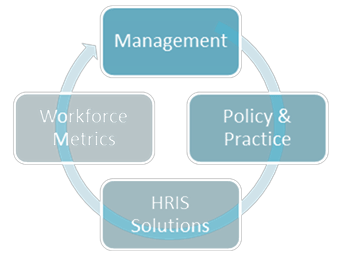When looking
at deploying Workforce Metrics, don’t settle on the ‘One Size’ model, consider
each potential audience type, and provide alternative delivery methods.
The Executive may require a simple Dashboard style view provided at month end,
whereas Functional Managers may require a more Detailed Reporting Framework with
a higher level of interrogation. If multiple methods of delivery are used,
every effort should be made to use a single source of information. This
ensures that all audiences are using the same base information and receiving
consistent results.
When initially
looking to introduce a Workforce Metrics Reporting solution, start with a simple
Model based on information that is readily available and recognisable which can
be provided in a timely fashion. As the Workforce Metrics solution gains
acceptance additional Metrics can be identified and the solution progressively
grown.
All Metrics are going to provide valuable insights into the performance when
used as a single snapshot, but the ability to trend that Metric will deliver
added value. Trending will identify whether a result is a reoccurring
event, or is an improving or worsening trend. Trended information can also be
used to track the impact of business initiatives. A simple example would
be the tracking the average Leave Entitlement from Month to Month to identify if
Entitlement Balances are trending down following an initiative to reduce the
Companies’ Leave Provision. |

|